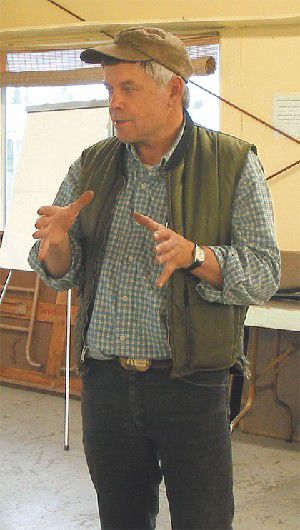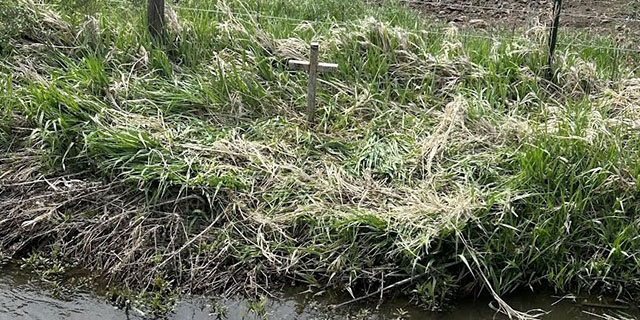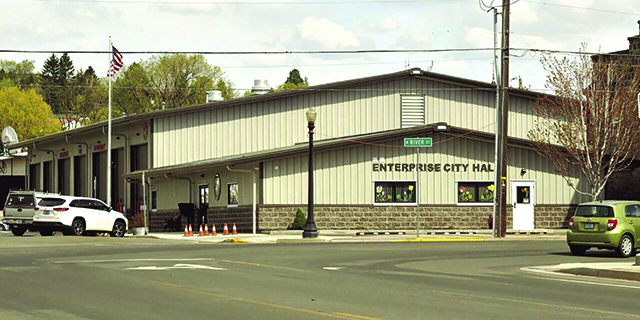Mobile USDA slaughtering unit explored
Published 5:00 pm Wednesday, May 11, 2005

- <center>Peter Donovan</center>
About 25 people met last Wednesday to discuss the potential for establishing USDA-inspected processing facilities in Wallowa County. Wallowa Resources is leading the inquiry as part of the Grow Oregon project, financed through a grant from the Meyer Memorial Trust. Peter Donovan is directing the project.
Grow Oregon is specifically looking into the feasibility of having a local USDA-licenced mobile slaughtering unit, which would send product to a licensed cut and wrap facility and allow Wallowa County livestock producers access to retail meat sales, including restaurants and grocery stores.
“I know it’s feasible to do, but I don’t know if it’s viable,” Donovan said. Some of the questions he is trying to get answers to include finding out how many producers would be interested in supplying a new facility, how much product would they supply and on what kind of schedule, how large would the local retail market be, and what kind of retail market could be accessed outside the county.
Donovan said that currently about five livestock producers in Wallowa, Baker and Union County are accessing the retail market through USDA channels out of state. Additionally, a few producers ship to out-of-state licensed processors and sell their meat through the marketing cooperative, Oregon Country Beef.
Donovan said the retail market for USDA-inspected red meat (including pork) is near half a million dollars a year in Wallowa County.
He talked about his recent visit to a new fixed USDA slaughtering facility in John Day. A Lopez Island, Wash., facility is a processing cooperative; members then direct market their sales individually. Product from the John Day facility is direct marketed jointly to gymnasts who desire hormone-free meat in Portland; Seattle, Wash.; and Salt Lake City, Utah.
The benefit of a mobile facility over a fixed facility is that the former are subject to almost no environmental regulations, Donovan said. They require no sewer permit and no holding facilities permit. A mobile unit could also serve neighboring counties.
Local rancher Mike Fluit said, “I’d prefer a mobile plant for less stress on the animals in shipping and waiting in line.”
Several attendees commented that many people do not have the freezer space or desire to buy meat in the large quantities required by custom processing. Some attendees expressed concern that a new facility might raise the costs on custom processing. Some questioned the potential for accessing retail sales through major grocery chains like Safeway.
Oregon State University extension agent John Williams said major chains tend to require a consistent supply across the nation. Local producers are more likely to serve regional sales and would probably be unable to supply a consistent quantity throughout the year.
Given the fact that there are about 27,000 cattle in the county, according to Williams, attendees agreed that any facility would have to rely on sales out of the county. A mix of individual and group direct sales would probably work well, Donovan said.
Williams said that grant money would probably be available for the start-up capital costs, but the question is whether the operating costs would be sustainable.
Two meat cutters, Kevin Silveira of Valley Meat Service and Jeff Stafford of Stafford Meats, attended the meeting. They both expressed concern over whether there would be enough volume to make a USDA-licensed facility cost effective.
“USDA is a huge headache for a meat processor,” Stafford said, adding, “I guess I’ve grown up enough that I could probably put up with it.”
There was some talk of surveying producers and conducting a marketing study, however Nils Christofferson of Wallowa Resources said he would prefer that any marketing study be done based on a real-life scenario with Silveira or Stafford taking on USDA licensing, rather than a study in the abstract.
Next, Donovan will be holding meetings in Umatilla and Baker Counties, and speaking to people in the Lewiston-Clarkston area.





